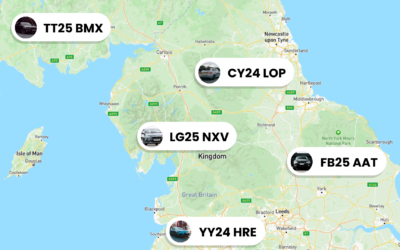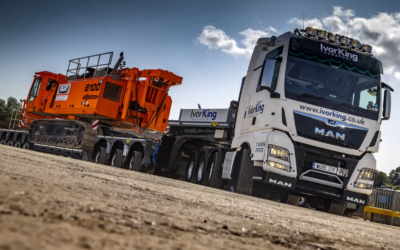Predictive Maintenance for Fleets: Cut Downtime Fast
Introduction — Why Predictive Maintenance Matters for Fleets
Predictive Maintenance for Fleets is not a buzzword — it’s a practical way to keep vehicles moving and costs down. As a fleet manager, you know that unexpected breakdowns hit utilisation, delivery schedules and your bottom line. By shifting from reactive repairs to *data-driven predictions*, you reduce unplanned downtime, avoid expensive emergency repairs and improve customer satisfaction.
Predictive maintenance sits between preventive schedules and reactive fixes: it uses live vehicle data to forecast failures before they occur. For busy fleets, this means fewer tow trucks, fewer last-minute parts orders and more predictable workshop loads. In short, adopting Predictive Maintenance for Fleets transforms maintenance from a cost centre into a performance enabler.
How Predictive Maintenance Works
Predictive Maintenance for Fleets relies on three pillars: data collection, analytics and operational workflows. Modern telematics and sensors capture engine diagnostics, temperature, vibration and fluid metrics. That raw data feeds analytics — from simple threshold alerts to sophisticated machine-learning models — that detect anomalies and project component life. When the model spots a likely failure, it triggers an alert that integrates into your maintenance system and dispatch workflows, so a technician can intervene at the right time.
The process requires stable data pipelines and clear escalation rules: which alerts generate immediate work orders, which are monitored, and how to record technician feedback to refine predictions. Because this is about people as much as technology, successful deployments combine good sensors, reliable connectivity and operational discipline. For fleets just starting, focus on high‑value assets and failure modes, then expand the Predictive Maintenance for Fleets programme as confidence grows.
Key Signals to Monitor and What They Reveal
Engine and drivetrain metrics
Engine fault codes, oil pressure, coolant temperature and RPM trends are primary predictors of serious failures. For example, slowly rising coolant temperature or intermittent fault codes often precede head gasket problems or cooling-system failures. Monitoring these signals helps you plan parts and labour ahead of time, reducing vehicle off‑road hours.
Vibration and bearing indicators
Vibration analysis can reveal wheel bearing wear, driveline imbalance or suspension degradation long before they become hazardous. By tracking frequency signatures and amplitude changes, Predictive Maintenance for Fleets spots mechanical wear that isn’t obvious in routine visual inspections.
Battery, charging and electrical health
Especially important for hybrid and electric vehicles, battery state-of-health, charge acceptance, and electrical load patterns indicate impending electrical failures. Early detection prevents roadside releases and supports safer, more reliable EV operations.
Implementing Predictive Maintenance in Your Fleet
Start small and practical. Choose a subset of vehicles with high utilisation or costly downtime and equip them with reliable telematics and sensors. Ensure your stack integrates with existing systems — your workshop job-card software, ERP and dispatch tools. If you’re using telematics for Tracking, connect it directly so alerts flow into maintenance workflows without manual intervention (see Traknova’s Tracking solution).
Design a pilot with clear success metrics: reduced downtime hours, fewer emergency repairs, and improved MTBF. Assign accountable owners — a maintenance lead to triage alerts and a data lead to tune models. Train technicians to understand alerts and record outcomes; that feedback loop is critical to improving prediction accuracy. As the pilot proves value, scale gradually across the fleet.
If you’d like to see Predictive Maintenance for Fleets in action, you can book a demo with Traknova to explore how the platform integrates telematics, maintenance workflows and reporting. Book demo: www.traknova.com/get-started/
KPIs and Calculating ROI
Operational KPIs to track
Track Downtime hours, Mean Time To Repair (MTTR), Mean Time Between Failures (MTBF), utilisation rates and maintenance backlog. These give a direct view of operational improvements as predictive systems mature. Keep a simple dashboard to show before‑and‑after trends.
Financial metrics and ROI framework
Quantify savings across labour, parts, towing and secondary costs such as customer compensation. Calculate avoided lost revenue from improved utilisation. For example, reducing one unplanned failure per month on a high‑use vehicle can quickly pay for sensors and analytics. When estimating payback, include implementation costs, sensor subscriptions and training. Predictive Maintenance for Fleets often delivers a rapid ROI when focused on the highest‑impact failure modes.
Common Challenges and Best Practices
Data quality and sensor coverage
Poor or noisy data creates false signals. Prioritise reliable sensor vendors and ensure firmware is updated. If full coverage isn’t feasible initially, monitor the most critical components first.
Prioritisation and false positives
Too many low‑value alerts lead to fatigue. Tune thresholds, use severity levels and route only actionable items to technicians. Over time, refine models with technician feedback to reduce false positives.
Continuous improvement
Treat Predictive Maintenance for Fleets as an iterative programme. Establish regular reviews between technicians, operations and data teams to validate predictions, adjust thresholds and add new signals. Link learnings back into procurement and driver training to prevent repeat failures. For additional reading on preventive approaches, see our Preventive Maintenance for Fleets: A Manager’s Playbook. Read more.
Conclusion
Adopting Predictive Maintenance for Fleets reduces unplanned downtime, lowers repair costs and improves reliability across operations. Start with a focused pilot, connect your telematics and maintenance systems, and build the feedback loops that let models improve. As a fleet manager, this approach gives you control over vehicle availability and the data to demonstrate clear ROI. For a guided walkthrough and tailored recommendations, book a demo with Traknova today: www.traknova.com/get-started/. Or if you prefer, contact us for a consultation.
Frequently Asked Questions (FAQs)
What is the difference between predictive and preventive maintenance?
Predictive maintenance uses live data and analytics to forecast failures; preventive maintenance uses fixed schedules regardless of actual condition. Predictive is more efficient for assets with variable wear patterns.
How quickly can a fleet see ROI from predictive maintenance?
Many fleets see measurable ROI within 6–12 months when the programme targets high‑utilisation vehicles and critical failure modes. Savings come from avoided breakdowns, fewer towings and better parts planning.
Do I need an in‑house data team?
Not necessarily. Many vendors, including Traknova, offer integrated platforms that manage analytics and alerting. You’ll still need operational owners to act on alerts and technicians to feed back results.
We want to hear from you. If this article helped, please share it with colleagues and on social media — it helps other fleet managers discover practical solutions. What’s the single biggest maintenance headache in your fleet right now? Reply below or contact us — we read every message and love feedback. If you’re ready to see a tailored demonstration, book a demo with Traknova and we’ll show how Predictive Maintenance for Fleets can work for your operations.










